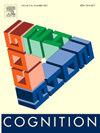How to show that a cruel prank is worse than a war crime: Shifting scales and missing benchmarks in the study of moral judgment
IF 2.8
1区 心理学
Q1 PSYCHOLOGY, EXPERIMENTAL
引用次数: 0
Abstract
Moral judgment is central to both everyday life and cognitive science, but how can it be studied with quantitative precision? By far the most direct and ubiquitous method is to simply ask people for their judgments, in the form of ratings on a labeled scale (e.g. Likert or Visual Analog Scales). As has long been recognized in sensory psychophysics, however, such responses are meaningful only in a relative sense. (Is your dog “big”? Perhaps yes in the context of house pets, but not in the context of all mammals?) Here we illustrate the nature and extremity of this problem using two case studies. First, to explore this theme in principle, we show in a series of nine experiments that this problem can readily lead subjects to (seemingly) judge a cruel prank (involving humiliation) to be just as immoral as (or even worse than) an internationally recognized war crime (involving murder). In contrast, such nonsensical results disappear when using magnitude estimation — a psychophysical method employing an explicit moral benchmark. Second, to demonstrate the importance of this theme in practice, we show that the use of magnitude estimation (vs. Likert scales) radically changes the proper interpretation of a recent study of ‘moral luck’, fueling essentially the opposite conclusion. Taken together, this work illustrates how insights from psychophysics can help improve measurement in contemporary moral psychology.
如何证明一个残酷的恶作剧比战争罪行更糟糕:道德判断研究中的尺度变化和基准缺失
道德判断是日常生活和认知科学的核心,但如何用定量精确地研究它呢?到目前为止,最直接和普遍的方法是简单地让人们做出判断,以标记量表(如李克特或视觉模拟量表)的评级形式。然而,正如感觉心理物理学早就认识到的那样,这种反应仅在相对意义上是有意义的。你的狗“大”吗?也许对家养宠物来说是这样,但对所有哺乳动物来说就不是这样了?)在这里,我们用两个案例来说明这个问题的本质和严重性。首先,为了从原则上探讨这个主题,我们在一系列的9个实验中表明,这个问题很容易导致受试者(似乎)判断一个残酷的恶作剧(包括羞辱)与国际公认的战争罪行(包括谋杀)一样不道德(甚至更糟)。相比之下,当使用幅度估计时,这种荒谬的结果就消失了——这是一种采用明确道德基准的心理物理学方法。其次,为了证明这一主题在实践中的重要性,我们表明,使用幅度估计(相对于李克特量表)从根本上改变了对最近一项关于“道德运气”的研究的正确解释,从本质上推动了相反的结论。总的来说,这项工作说明了心理物理学的见解如何有助于改善当代道德心理学的测量。
本文章由计算机程序翻译,如有差异,请以英文原文为准。
求助全文
约1分钟内获得全文
求助全文
来源期刊

Cognition
PSYCHOLOGY, EXPERIMENTAL-
CiteScore
6.40
自引率
5.90%
发文量
283
期刊介绍:
Cognition is an international journal that publishes theoretical and experimental papers on the study of the mind. It covers a wide variety of subjects concerning all the different aspects of cognition, ranging from biological and experimental studies to formal analysis. Contributions from the fields of psychology, neuroscience, linguistics, computer science, mathematics, ethology and philosophy are welcome in this journal provided that they have some bearing on the functioning of the mind. In addition, the journal serves as a forum for discussion of social and political aspects of cognitive science.
 求助内容:
求助内容: 应助结果提醒方式:
应助结果提醒方式:


